Punish me, Polyvotis
Ashley Denny Petch
I’ve been on Nisyros, a small island in the Dodecanese, for less than two weeks, and in this short time, I’ve experienced an unprecedented level of emotional upheaval. I’m prone to intense outbursts and erratic behaviour, unexplained crying spells, and mysterious bruises have appeared all over my legs. On top of all that, I’ve lost not one, but two very precious rings—one while swimming in the sea and the other on a monastery-clad mountain. Luckily, there’s a simple explanation for all this turmoil.
It’s the volcano’s fault.
--
In fact, Nisyros isn’t exactly an island; it’s a hydrothermal volcano. An active one. At the centre of the small circular land mass, you can explore the various calderas, craters formed from previous eruptions, that make up the volcanic activity on the island. Although it has not had a mass eruption for 20,000 years, several small seismic blasts and earthquakes suggest that the volcano may slowly be emerging from hibernation.1
It’s a tough island, made up of rock escarpments, volcanic ash and pumice rocks. There is a pulse to this place. Turbulent wind and waves crash all along the perimeter. The terrain cautions you; Nisyros demands your respect.
--
Visiting the volcanic craters at the centre of the island is a hyper-sensory experience. Upon descending into the calderas, the air is thick with the sickeningly sweet smell of sulphur emanating from the rocks that radiate an intense heat. The largest crater, Stefanos, is smooth and glistening like a skating rink, blemished only by the various active fumaroles emerging from its floor, reminding you that this is a living, breathing behemoth.
The colours that make up the layers of earth that scale the craters are an aberrant combination of neon greens and yellows, mixed with natural ochres and terracottas. A variety of vegetation is scattered around the terrain, some scorched and blackened to a crisp, others vibrant and lush green, the fecund and moribund all at once.
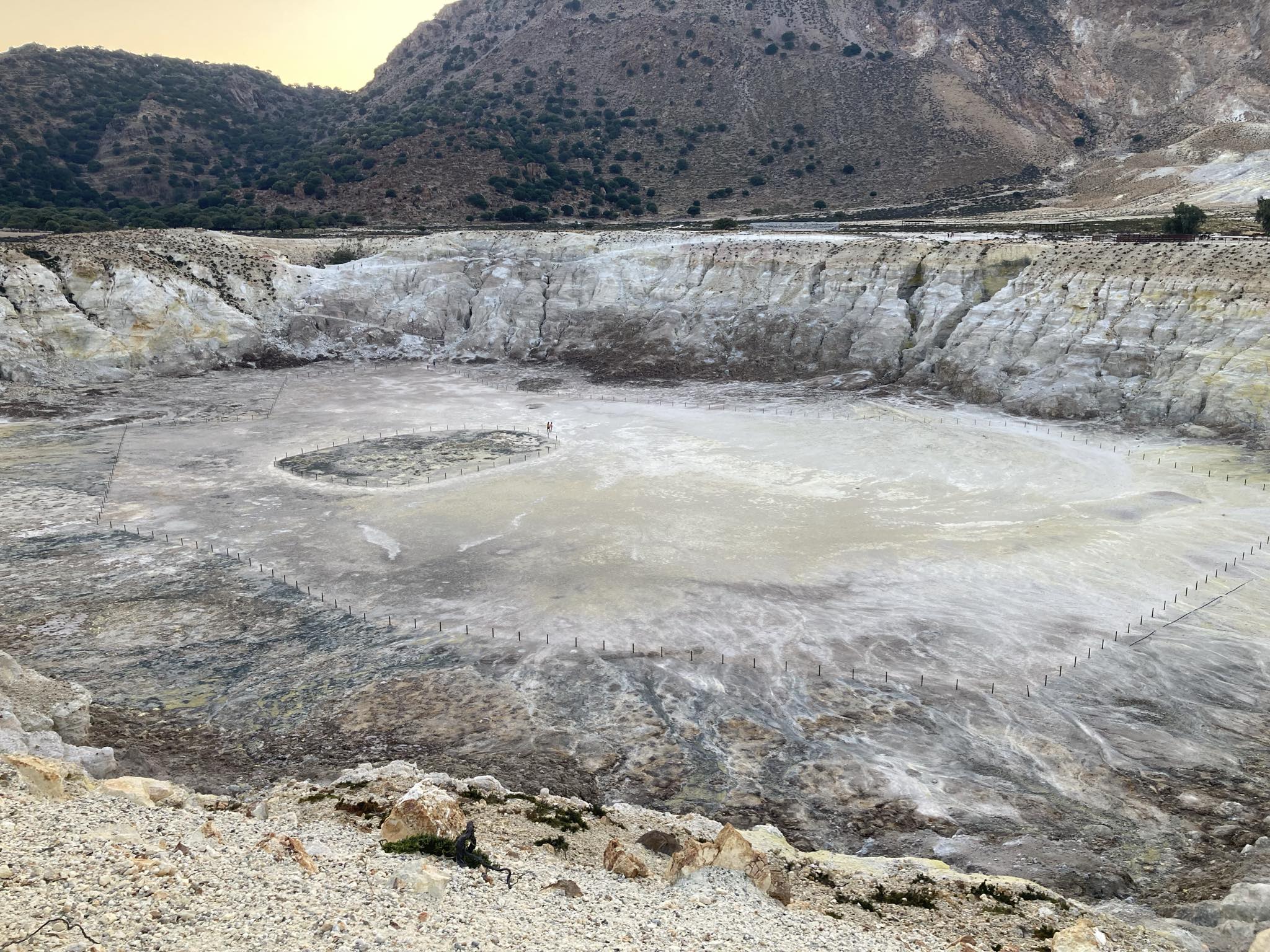
Create, destroy, repeat. Nothing grows inside a volcano. Everything grows inside a volcano.
My encounter with the volcano was mesmeric. I was overcome; I wanted to stay but I also wanted to cry. I felt ensnared by its beauty and scale. At the time I couldn’t find the words to describe the feeling, but I know now that what I was experiencing was a rare encounter with the sublime.
Put simply, the sublime is an experience of overwhelming beauty and power that transcends our ability to fully grasp it.
Since at least the 1st century, thinkers have been making investigations into the nature of the sublime. These early inquiries laid the groundwork for later theories in the 18th century, where a more formal distinction was made between the beautiful and the sublime.
So what is the difference exactly?
The sublime overwhelms, while the beautiful soothes. The feeling of terror is central to the sublime. And it’s precisely through this terror that we can transcend reason.
When has a sunset ever terrified you? It’s beautiful, but anodyne. A volcano, however, reminds you that it’s eternal and that it can kill you whenever it wants, forcing you to forget yourself, if only for a fleeting moment or two.
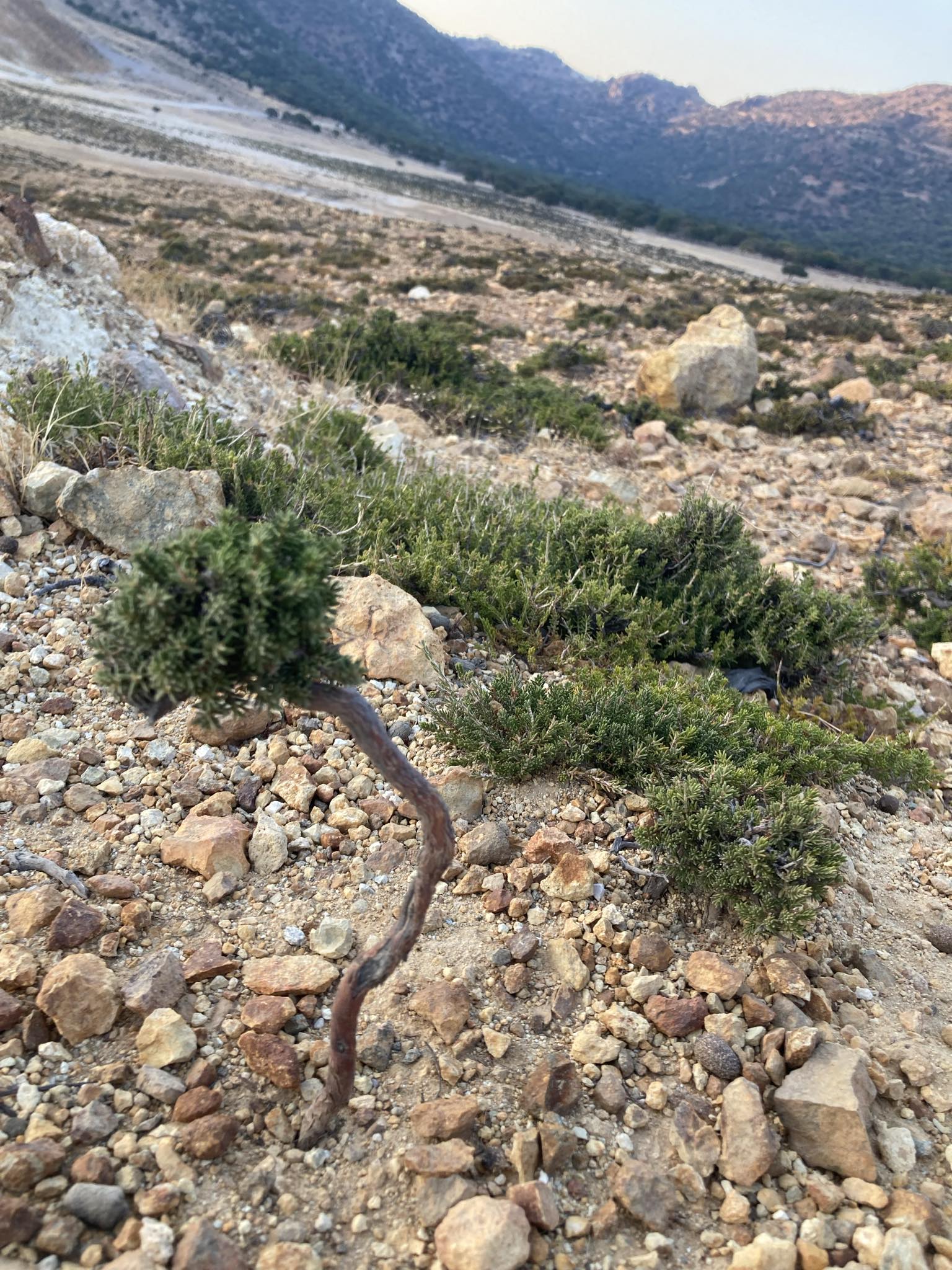
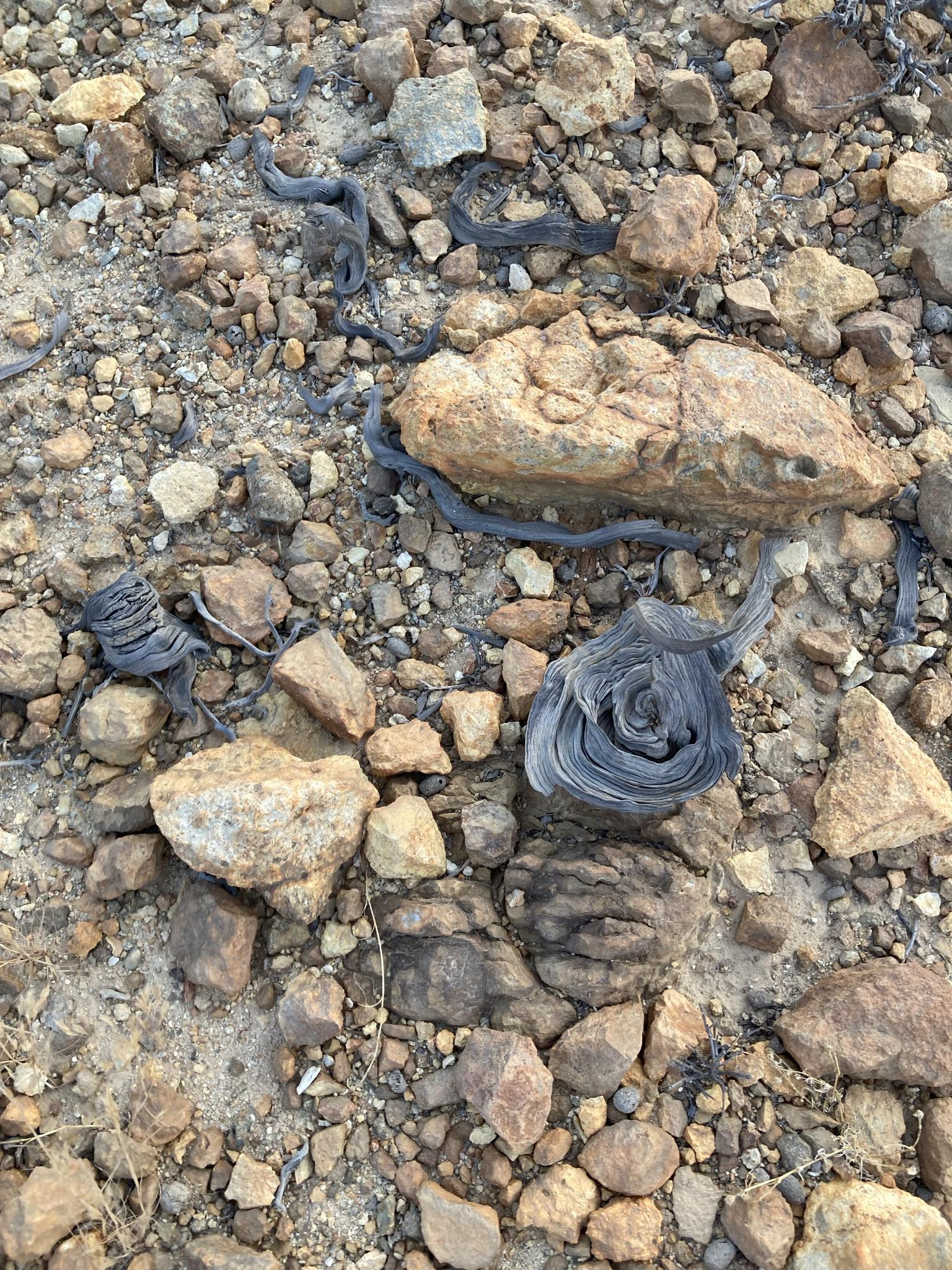
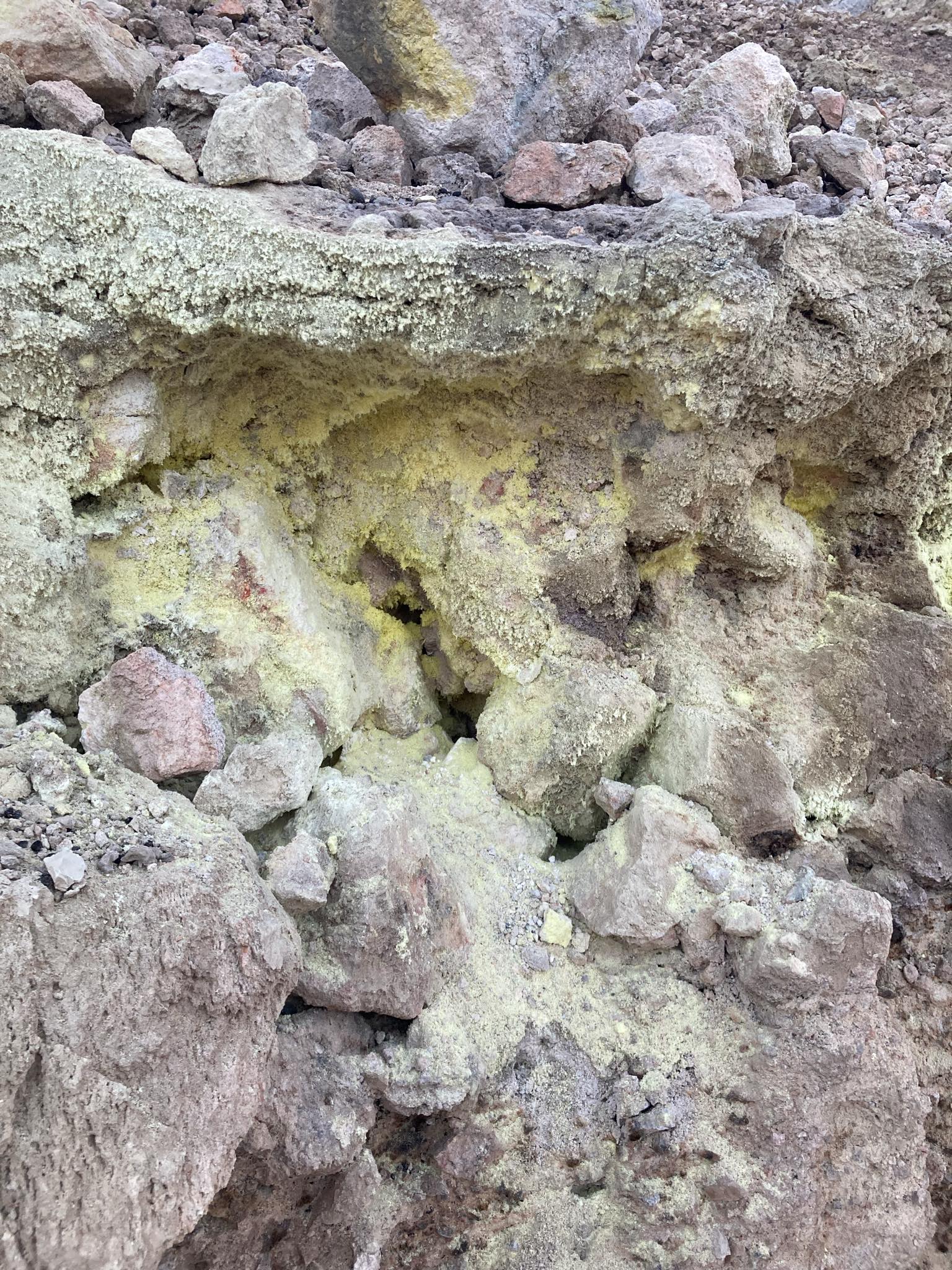
Kant, 18th century German philosopher and super normal dude, distinguished between two types of sublime - mathematical sublime and dynamical sublime. The mathematical sublime occurs when we encounter something of such overwhelming size or proportion that our imagination can’t fully grasp it, for example the age of the universe. It isn’t the vast object itself that is sublime, but rather the superiority of our rational faculties, which can conceptually grasp the unfathomable, even if our sensory faculties cannot.
The dynamical sublime, on the other hand, is about facing an overwhelming power or force in nature, like a violent thunderstorm, that could potentially destroy us, evoking both terror at the fear of destruction, but also respect and awe. Kant, ever the moralist, believed that these encounters proved that although we feel physically vulnerable in the face of natural violence or power, we can resist through moral strength.
Put more simply, the mathematical sublime demonstrates our ability to reason while the dynamical sublime enforces our moral autonomy in the world.
Later on, Arthur Schopenhauer, 19th century German philosopher and his mother’s favourite son, described the sublime as an aesthetic experience where the individual confronts something vast, powerful, and potentially threatening, but in a way that allows them to transcend personal fear and desire.
In his work The World as Will and Representation, Schopenhauer investigates the distinction between something merely beautiful and something sublime, and he defines the fullest feeling of sublime as:
-
Immensity of Universe's extent or duration. (Pleasure from knowledge of observer's nothingness and oneness with Nature).
Yes, yes, Arthur! I want to feel nothingness in the face of terrifying beauty. This is what I experienced at the Nisyrian volcano. Destructive oneness with an object full of life. I felt overpowered by the volcano, but more importantly, I felt the desire to be overpowered.
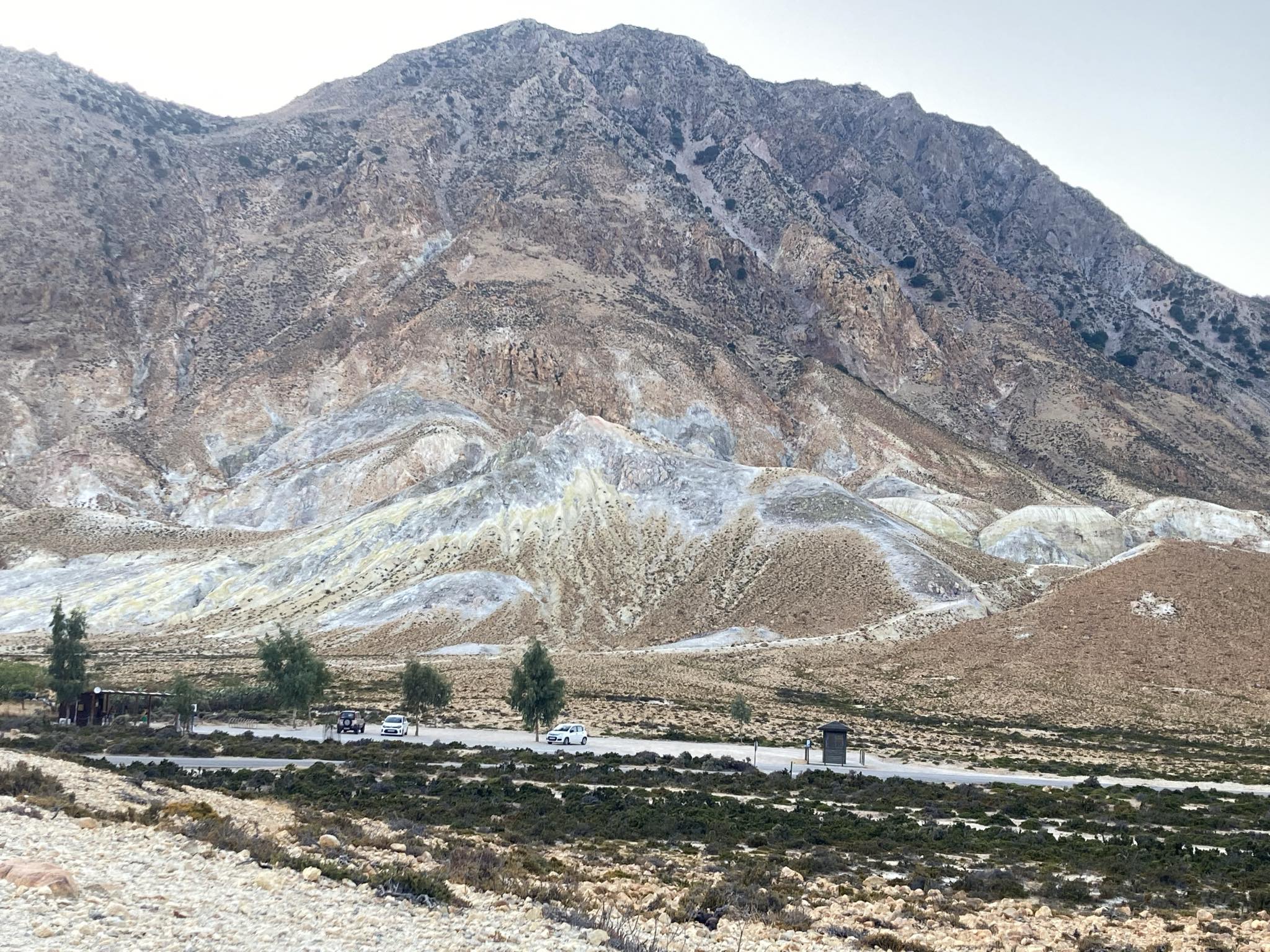
For Schopenhauer, existence is a constant state of terror. So when we confront the sublime, we’re forced, however temporarily, to escape the inherent suffering and dissatisfaction of the human experience.
Even more later on, Jean-François Lyotard, 20th century French philosopher (and seemingly an actual normal dude - I couldn't find a single weird story about him), expanded on both Kant and Schopenhauer by interpreting the experience of the sublime as the limit of our reason - as a means to represent the unrepresentable. The sublime is the way in which we interpret stimuli that are beyond conventional representation.
Lyotard introduced the concept of ‘the event of a passion’ to deepen our understanding of the sublime. The word passion is derived from the Latin passio, from the verb patior, meaning “to suffer, endure”. A passion is something you suffer, something that happens to you beyond your control. The event of a passion represents an encounter with something unrepresentable - we suffer the impact of the ungraspable. Thus, the sublime is both pain and pleasure at once.
--
Nisyros is a prison. According to Greek mythology, the land mass was formed during the Gigantomachy War, when Poseidon ripped a chunk off of the neighbouring island of Kos and threw it at the Giant Polyvotis, trapping him underneath the sea. This chunk became Nisyros. The volcanic activity, rumblings and eruptions of Nisyros are the giant’s centuries-long efforts to free himself from his tectonic jail.
From ancient times up until today, from Vesuvius to Iceland to Java, volcanic eruptions are frequently seen as divine intervention, a consequence of bad behaviour. Sin is often the explanation for natural disasters like volcanic eruptions. Mount Etna, due its frequent eruptions and seismic activity, was regarded in the medieval period as the gateway to hell, symbolising the looming threat of eternal damnation and cautioning sinners to repent before it was too late.
Volcanoes, like Etna, like Nisyros, are a place of punishment.
Even the root of the word volcano reminds us that it invokes a potentially retributive God. The Greek word for Volcano is ηφαίστειο (ifaísteio)2 from Hephaestus, the smithing god of fire. Hephasteus was cast out of Mount Olympus by his Mother Hera due to a congenital deformity, perhaps a limp. He descended to earth, built a workshop at the base of Mount Etna and became an expert goldsmith. Later, he exacted revenge on his mother by building her a beautiful golden throne that trapped her in place when she sat on it, leaving her unable to stand up again. A Freudian Family Feud, if there ever was one.
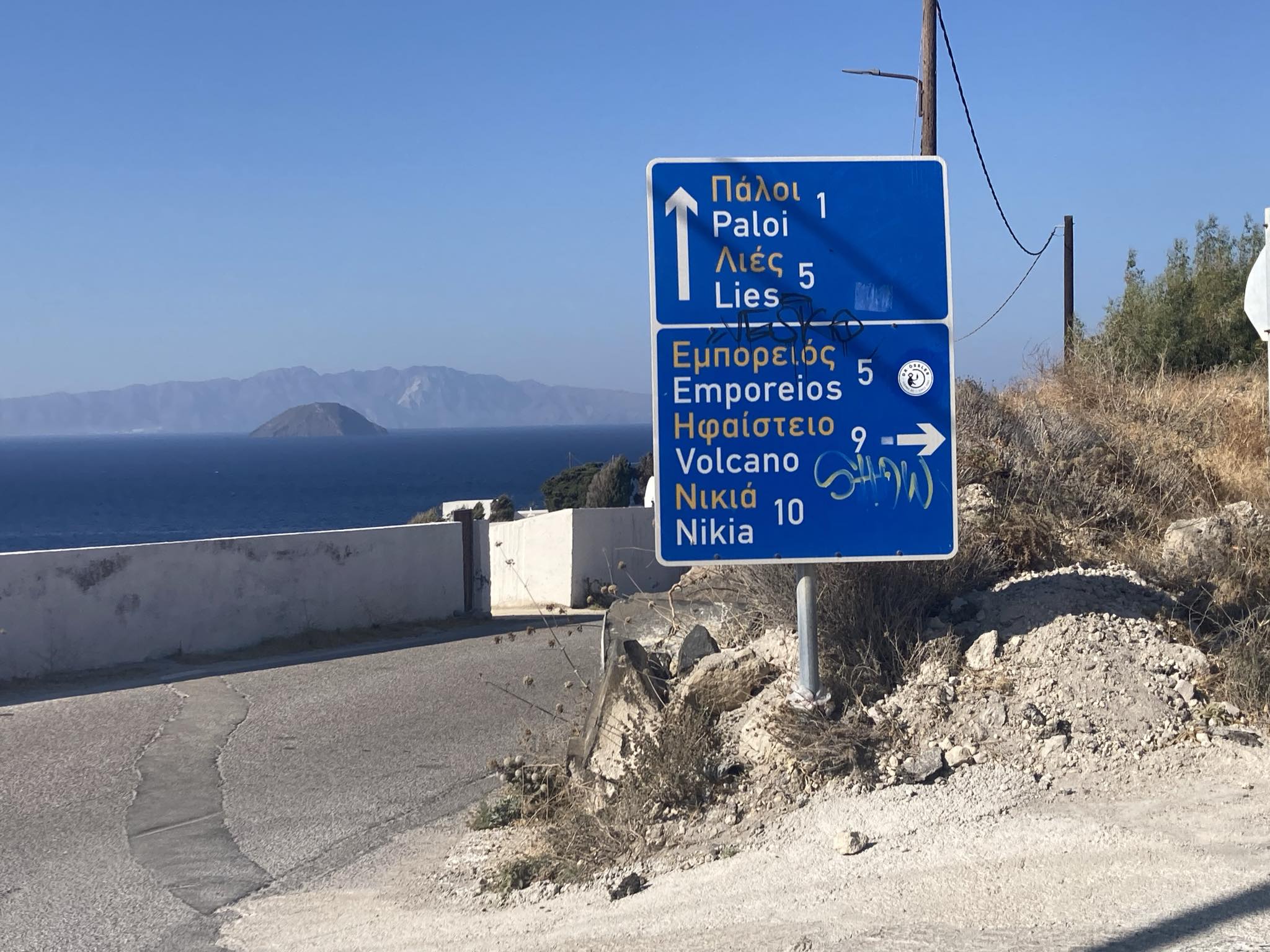
--
There are roughly 1,000 permanent inhabitants on Nisyros, spread out among 4 small villages. So, what does it do to a people to live in, alongside, with an active volcano? Let’s examine the morphological fate of Nisyrians.
There is no question that the founding myth of a place shapes the collective consciousness of its people (or, conversely, that the collective consciousness of the people can shape or reshape the founding myth).
Every resident that I asked unequivocally agreed that the volcano produced a kind of energy to the island. When I asked how it affected him to live in an active volcano, one Nisyrian described the volcano as an amplifier. Whatever mood or emotions you’re experiencing, the volcano amplifies them and produces an intensity, a heightened awareness. Polyvotis punishes and protects, all at once.
Nisyros is not simply a random act of geology - it is a sublime place of eternal punishment. The sublime isn’t just terror - it’s about what terror can unlock within oneself. Redemption is a function of sin, not its opposite. In Nisyros, the sublime is not just an aesthetic experience, but rather it’s a function of salvation. Perhaps punishment is a path to transcendence.
--
So nevermind that the emotional outbursts could be due to a fledgling relationship, the tears hormonal, the bruises from the motorbike I’m learning to drive, and the rings? Ornamental hangovers from my previous lives. Their disappearance feels like a necessary offering to Polyvotis. The volcano is punishing me and I deserve it.

1. Seeing Volcanoes in a New Light
2. The English word Volcano is derived from Hephaestus's Latin counterpart Vulcan, the Roman God of Fire.
Further Reading:
- Guy de Maupassant’s lovely account of his visit to Mount Etna
- Pliny the Younger’s account of witnessing the eruption of Vesuvius